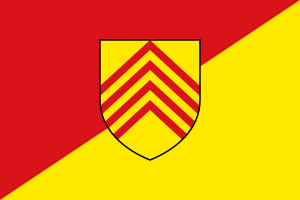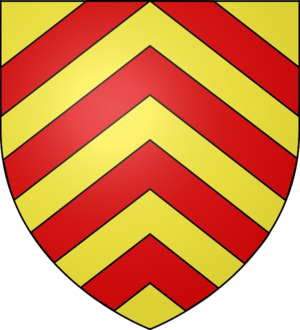Melle facts for kids
Melle is a town located in the Belgian province of East Flanders. It is a municipality, which means it is a local area with its own government. In 2007, about 10,660 people lived in Melle. The town is found at a specific location on the map: 51 degrees North and 3 degrees 48 East.
Contents
What is Melle Like?
Melle is known for being a peaceful place with a mix of green areas and residential neighborhoods. It's close to the bigger city of Ghent, which makes it a convenient place to live. Many people who work in Ghent choose to live in Melle because it offers a quieter lifestyle.
Geography and Nature
Melle is situated in a flat region, typical of Flanders. It has some lovely natural spots, including parts of the Scheldt River valley. This river is important for the area's environment and history. You can find walking and cycling paths along the river, perfect for exploring nature.
Local Green Spaces
The municipality has several parks and smaller green areas. These spots are great for outdoor activities like picnics, playing sports, or just enjoying nature. They help make Melle a pleasant place for families and young people.
Economy and Jobs
Melle has a diverse economy. It has some industries, but also many small businesses and shops. Being close to Ghent helps Melle's economy, as it benefits from the larger city's activities. Many people in Melle work in services, education, or healthcare.
Local Businesses
You can find various local businesses in Melle, from bakeries and grocery stores to small workshops. These businesses are important for the community, providing jobs and services to the residents.
History of Melle
Melle has a long history, dating back many centuries. Like many towns in Flanders, it has seen different rulers and changes over time. Its location near the Scheldt River made it important for trade and transport in the past.
Early Settlements
Evidence suggests that people lived in the Melle area even in ancient times. The fertile land and access to water made it an attractive place for early settlements. Over the centuries, these small communities grew into the town we know today.
Medieval Times
During the Middle Ages, Melle was part of larger territories and duchies. It was influenced by powerful lords and religious institutions. Many of the old buildings and churches in the region have roots in this period.
Modern Development
In more recent history, Melle has grown and modernized. The arrival of railways and better roads helped connect it to other parts of Belgium. This led to more people moving to the town and new businesses starting up.
Education and Community
Melle has several schools, offering education from primary to secondary levels. These schools play a central role in the community, providing learning opportunities for children and teenagers.
Local Schools
The schools in Melle focus on providing a good education in a supportive environment. They offer a range of subjects and activities to help students learn and grow. Many students from Melle also attend schools or universities in nearby Ghent.
Youth Activities
There are various clubs and organizations for young people in Melle. These groups offer activities like sports, music, and scouting. They help kids make friends, learn new skills, and get involved in their community.
Culture and Events
Melle has a lively community spirit, often seen through its local events and traditions. Throughout the year, there are festivals, markets, and other gatherings that bring people together.
Local Festivals
The town celebrates several traditional festivals. These events often include parades, music, and local food. They are a great way for residents to celebrate their heritage and enjoy time with neighbors.
Community Gatherings
Besides big festivals, there are smaller community gatherings, like farmers' markets or local sports events. These events help strengthen the bonds between people in Melle and create a friendly atmosphere.
See also
 In Spanish: Melle para niños
In Spanish: Melle para niños



